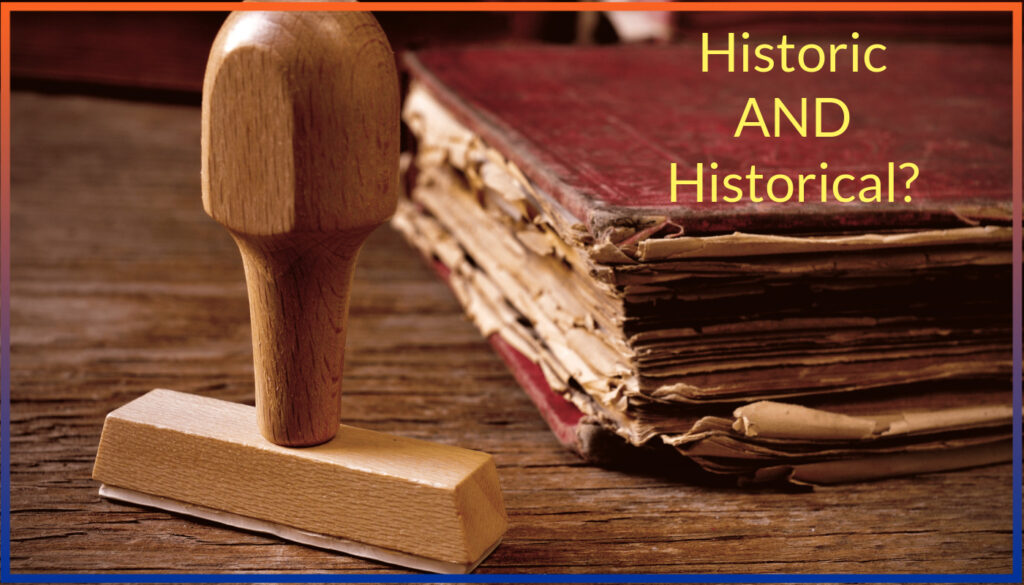
As local government staff, you’re likely the keepers of your community’s history. You preserve records, manage landmarks, and maybe even lead tours through charming old buildings. But for describing these treasures, do you ever stumble over the words “historic” and “historical”? Don’t worry, you’re not alone! A recent article on Apartment Therapy showed “historic” and “historical” among their list of most frequently confused words. Today, we’ll clear up the fog and ensure your historical communications shine as bright as a freshly polished museum trophy.
Historic vs. Historical: A Tale of Two Meanings
Imagine a grand, old courthouse standing proudly in the town square. It’s historic—it has played a significant role in your community’s past, witnessed pivotal events, and shaped the lives of generations. This adjective describes something’s importance and connection to the past.
Now, picture a dusty box of documents in the courthouse basement. These documents are historical—they provide information about the past, offering details about the courthouse’s construction, past occupants, and maybe even juicy local scandals. This adjective describes something that relates to or belongs to history.
Remembering the Rule:
Think of “historic” as something that carries the weight of history, like a monumental event or a legendary figure. “Historical” simply means “of or relating to history”, like a fact or an artifact.
Examples to Keep it Clear:
- Historic: The town’s annual parade celebrates a historic battle that secured its independence.
- Historical: The parade organizers consulted historical documents to ensure accurate portrayals of the event.
- Historic: The old oak tree outside the courthouse is a historic landmark, said to have been planted by the town’s founder.
- Historical: Researchers studying the tree rings hope to gather historical data about the town’s climate and environment.
Bonus Tip: When in doubt, opt for “historical”. It’s the more general term and rarely wrong.
Beyond the Basics:
Now that you’ve mastered the core distinction, let’s explore some nuanced uses:
- “Historically significant”: This phrase emphasizes the importance of something within the broader context of history.
- “Historical accuracy”: This refers to the truthfulness of information about the past.
- “Historical context”: This means understanding the surrounding circumstances of a historical event or figure.
All this to say, for local governments, certain documents can be both historic and historical.
Remember: Using the right words effectively shows your professionalism and enhances your communication with the public. So, the next time you write about your community’s fascinating past, choose “historic” or “historical” with confidence, knowing you’ve got the key to unlocking clear and accurate historical storytelling.
By following these tips, you can ensure your writing about local history is as clear and accurate as a well-preserved document. Remember, even the most seasoned historians can get tripped up by these tricky terms. So, don’t be afraid to consult a dictionary or ask a colleague for help. After all, clear communication is essential for preserving and sharing the stories of our past.
Now go forth and conquer the world of historical vocabulary! Your community’s fascinating past awaits!
